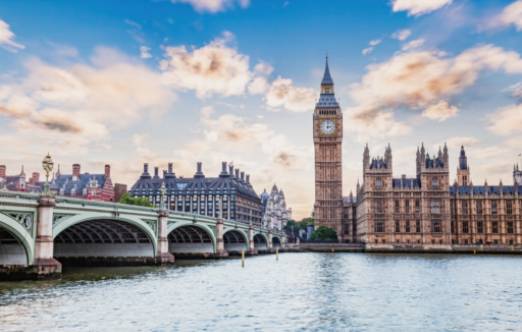The National Gallery in London is home to an impressive collection of Western European art, showcasing masterpieces from various periods and styles. From the iconic works of the Italian Renaissance to the vibrant French Impressionism, this renowned institution offers visitors a comprehensive overview of the rich history of art in Europe. With works by renowned artists such as Rembrandt, Vermeer, Dürer, and Van Eyck, the National Gallery is a must-visit destination for art enthusiasts and history buffs alike.

Exploring the Italian Renaissance Masterpieces at the National Gallery
The Italian Renaissance was a period of great cultural and artistic achievement, and the National Gallery is home to some of the most iconic and breathtaking masterpieces from this era. Walking through the halls of the gallery, one is transported back in time to a world of beauty, creativity, and innovation.
The collection of Italian Renaissance art at the National Gallery includes works by renowned artists such as Leonardo da Vinci, Michelangelo, Raphael, and Botticelli. These artworks showcase the mastery of techniques such as perspective, proportion, and chiaroscuro, as well as the enduring themes of religion, mythology, and humanism that characterized the Renaissance period.
One cannot help but be captivated by the intricate details and vibrant colors of Botticelli's "The Birth of Venus" or the powerful emotion and drama of Michelangelo's "The Entombment." Each painting tells a story and invites the viewer to delve deeper into the artist's vision and message.
Exploring the Italian Renaissance masterpieces at the National Gallery is a truly enriching experience, offering a glimpse into a golden age of art and culture that continues to inspire and awe viewers to this day.
Dutch Golden Age Artworks at the National Gallery: Rembrandt and Vermeer
The National Gallery in London is home to a stunning collection of Dutch Golden Age artworks, particularly those created by renowned artists like Rembrandt and Vermeer. These masterpieces provide a glimpse into the rich artistic tradition of the Netherlands during the 17th century, a period known for its flourishing economy and vibrant cultural scene.
Rembrandt van Rijn, often considered one of the greatest painters in Western art history, is well represented in the National Gallery's collection. His works, such as "Self-Portrait at the Age of 34" and "Belshazzar's Feast," showcase his exceptional talent for capturing emotion and drama in his paintings. Rembrandt's mastery of light and shadow, as seen in his stunning use of chiaroscuro, adds depth and intensity to his works, making them truly captivating to behold.
Similarly, Johannes Vermeer's paintings, like "The Guitar Player" and "A Young Woman standing at a Virginal," are celebrated for their exquisite detail and meticulous composition. Vermeer's ability to create a sense of intimacy and tranquility in his domestic scenes is truly remarkable, drawing viewers into a world of everyday beauty and grace.
Overall, the Dutch Golden Age artworks by Rembrandt and Vermeer at the National Gallery offer a unique opportunity to appreciate the talent and creativity of two of the most significant artists of their time. Their masterpieces continue to inspire and delight art lovers from around the world, making them an essential part of any visit to this renowned institution.
French Impressionism and Post-Impressionism at the National Gallery
Visitors can admire masterpieces by renowned artists such as Claude Monet, Pierre-Auguste Renoir, Edgar Degas, and Paul Cézanne. The collection includes iconic paintings like Monet's "Water Lilies" series, Renoir's "La Loge," Degas' "The Ballet Class," and Cézanne's "The Bathers." These works highlight the innovative techniques and unique perspectives that defined Impressionism and Post-Impressionism as groundbreaking artistic movements in the late 19th and early 20th centuries.
Spanish Baroque Art in the Collection of the National Gallery
The National Gallery's collection of Spanish Baroque art includes masterpieces that showcase the drama, emotion, and technical skill characteristic of this period. From Velázquez's iconic portrait of Pope Innocent X to Murillo's tender depictions of the Virgin Mary, these works offer a glimpse into the rich artistic heritage of Spain during the Baroque era. With their vibrant colors, dynamic compositions, and powerful emotions, these works continue to captivate viewers and serve as a testament to the enduring legacy of Spanish Baroque art.
British Art Through the Centuries: Highlights at the National Gallery
British art has a long and rich history, with many significant works showcased at the National Gallery. From the iconic Tudor portraits of Hans Holbein the Younger to the romantic landscapes of J.M.W. Turner, visitors can explore a diverse range of artistic styles and movements throughout the centuries. One of the most notable highlights is the collection of works by the Pre-Raphaelite Brotherhood, a group of talented painters who sought to revive the purity and simplicity of medieval art. Artists such as Dante Gabriel Rossetti and John Everett Millais are featured prominently in the gallery, showcasing their intricate attention to detail and vivid storytelling. Additionally, the National Gallery boasts an impressive selection of portraits by renowned artists like Thomas Gainsborough and Joshua Reynolds, capturing the elegance and charm of British society throughout history. Overall, the British art collection at the National Gallery offers a fascinating glimpse into the country's artistic heritage and cultural identity.
German and Flemish Artworks at the National Gallery: Dürer to Van Eyck
The German and Flemish artworks at the National Gallery showcase a rich and diverse array of artistic masterpieces spanning from the Renaissance period to the Baroque era. Artists such as Albrecht Dürer and Jan van Eyck have left a lasting impression on the art world with their innovative techniques and attention to detail. Dürer's intricate engravings and woodcuts demonstrate his technical skill and artistic vision, while Van Eyck's pioneering use of oil paint revolutionized the medium. These artworks provide a fascinating glimpse into the artistic traditions of Germany and Flanders, highlighting the unique contributions of these regions to the broader European art scene.
